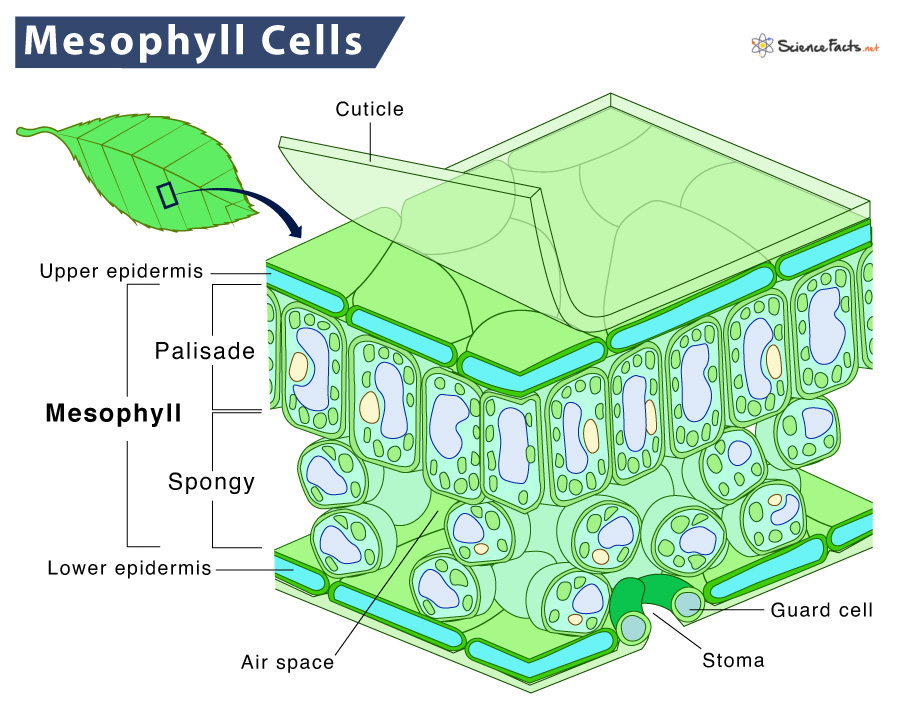The word ‘mesophyll’ is derived from two Greek words, ’ mesos’, meaning middle, and ‘phyllo,’ meaning leaf.
Types of Mesophyll Cells with Functions
1. Palisade Mesophyll Cells
The cells are elongated, cylindrical (columnar) shaped, located just below the epidermis. Apart from the nucleus, palisade cells are bounded by a cell membrane and contain a large vacuole and chloroplast, among others. These cells are loosely arranged but nearby, so materials can pass through. They are usually only a single layer. Functions They perform the bulk of photosynthesis in leaves due to the abundance of the chloroplast. Palisade cells are well positioned to absorb sunlight required for plant food production. Their location also ensures that carbon dioxide required for photosynthesis does not need to travel a long distance to reach the chloroplast. Palisade cells are thus the primary source of oxygen in nature. These cells below the upper epidermis also allow light, water, and gases to reach the cells efficiently. The open spaces between the cells increase the absorption surface area and help gas exchange.
2. Spongy Mesophyll Cells
They are located below the palisade mesophyll cells and above the lower epidermis. In contrast to the palisade cells, cells of the spongy layer are spherical-shaped or irregular (isodiametric) in some plants. However, similar to them, spongy cells are loosely packed for gas exchange and contain a nucleus, a vacuole, a cell membrane, and chloroplasts, among others. Some of the spongy cells are found to contain crystal inclusions in their vacuoles. However, the thickness of the spongy mesophyll is almost 1.5 and 2 times that of palisade tissue. Depending on the plant type, spongy mesophyll cells can be of three types:
Typical spongy parenchyma cellsPalisade-like spongy cellsAerenchymatous spongy cells
Functions They perform photosynthesis due to the presence of chloroplasts. However, they contribute less than palisade cells since they contain few chloroplasts. Also, due to their inner location, light cannot penetrate, which is not ideal for photosynthesis. Although not well suited for photosynthesis processes, their loose arrangements are ideal for gaseous exchange. Carbon dioxide reaches the mesophyll cells through an opening in the epidermis, and oxygen released through photosynthesis passes out. The spongy mesophyll also permits the plant to bend and move with the wind, which helps move gases around the leaf cells.
